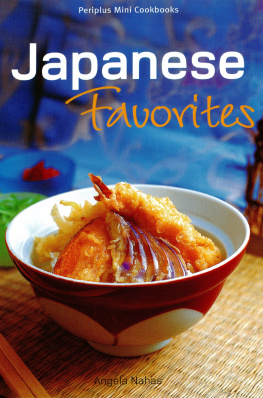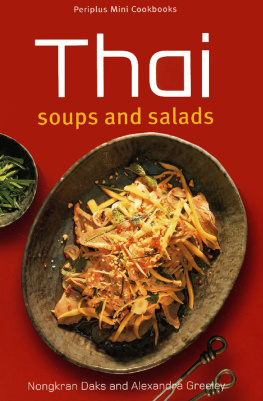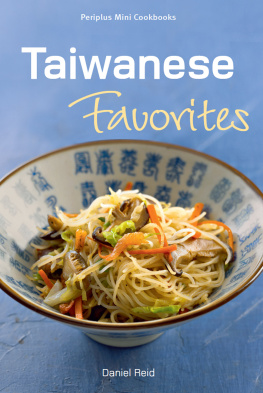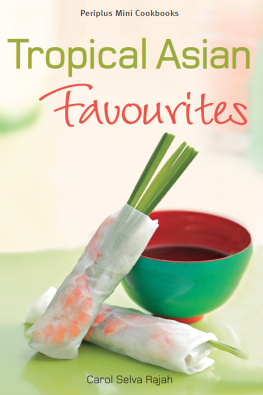
Basic Japanese Ingredients Agar-agar or kanten is a gelatin-like thickener that is made from seaweed. It is used like gelatin to make desserts. It melts at a higher temperature than gelatin, which makes it suitable for use in hot climates, and produces a more delicate and firm texture than gelatin. Store in a cool, dry place. It is available in powdered form or as long, dried strips in packets.

Azuki beans are small, red beans that look like tiny kidney beans.
They are sold dried or in tins in supermarkets. Dried azuki beans should be soaked overnight in water then cooked until tender. The canned beans may be used straight from the tin.  Basil is available in several varieties, each with a different scent. Fresh Asian basil is used in many Asian dishes. If fresh basil is not available, the best substitute is sweet basil or fresh coriander leaves or mint as dried basil does not have the same flavor.
Basil is available in several varieties, each with a different scent. Fresh Asian basil is used in many Asian dishes. If fresh basil is not available, the best substitute is sweet basil or fresh coriander leaves or mint as dried basil does not have the same flavor.
Basil is available fresh in markets and supermarkets. Burdock is a long, slender root that is rich in fiber and nutrients. It should be scraped and not peeled before use as much of its flavor is close to the skin. Substitute with French beans. Cornflour or cornstarch is a fine white powder used as a thickening agent.  Daikon radish is a large, white radish widely used in Japanese cooking.
Daikon radish is a large, white radish widely used in Japanese cooking.  Daikon radish is a large, white radish widely used in Japanese cooking.
Daikon radish is a large, white radish widely used in Japanese cooking.
It may be eaten raw or cooked and is often pickled or grated. Used mainly in so ups and stir-fries, it is sold in supermarkets. Dashi powder is used to make dashi fish stock and as a basic seasoning in many soups and salad dressings. It may be substituted with so up stock powder or bouillon cubes.  Dried bonito flakes are shavings of dried, smoked and cured bonito fish, sold in fine or coarse flakes in small plastic packs. Fine flakes are used as a ga rnish, while coarse flakes are used to make dashi fish stock.
Dried bonito flakes are shavings of dried, smoked and cured bonito fish, sold in fine or coarse flakes in small plastic packs. Fine flakes are used as a ga rnish, while coarse flakes are used to make dashi fish stock.
Store unused portions in an air-tight container.  Dried wakame seaweed is sold dried in strips. Dried wakame is light brown and should be soaked in water before use. It is often added to soups, a few minutes before serving and has a crunchy texture. This calcium-rich seaweed may also be toasted and crumbled over so ups and other dishes.
Dried wakame seaweed is sold dried in strips. Dried wakame is light brown and should be soaked in water before use. It is often added to soups, a few minutes before serving and has a crunchy texture. This calcium-rich seaweed may also be toasted and crumbled over so ups and other dishes.  Japanese cucumbers are smaller, thinner and sweeter than normal cucumbers and have much smaller seeds.
Japanese cucumbers are smaller, thinner and sweeter than normal cucumbers and have much smaller seeds.
Since they are rarely available outside Japan, we have substituted baby cucumbers. Pickling cucumbers or gherkins may also be used. Japanese eggplants are long and narrow with sweet, tender flesh. They should be rubbed briskly with salt or rinsed with salt water after cutting to prevent discoloration. Japanese mustard is hotter than French or English mustard. It is made from a blend of ground mustard seeds without the addition of flour.
Japanese mustard is sold in powdered form in small tins or as a paste in tubes and is available in supermarkets. Japanese mayonnaise is thicker, creamier and saltier than Western mayonnaise, however Western mayonnaise may be used as a substitute. Japanese mayonnaise is sold in small bottles. Japanese rice is a short-grain variety that is slightly more starchy than Thai or Chinese long-grain rice. Available from most supermarkets, it may be substituted with any short- or medium-grain rice. Konnyaku, made from a type of potato, is sold either in powdered form or as grayish brown, jelly-like noodles or blocks kept in plastic packets-these should be stored in water in the refrigerator.
Also known as "devil's tongue", it has a chewy texture, is bland but is high in minerals with no fat.  Leeks used in Asian cooking are smaller and mo re delicate than European leeks. If leeks are not available, substitute spring onions or European leeks.
Leeks used in Asian cooking are smaller and mo re delicate than European leeks. If leeks are not available, substitute spring onions or European leeks.  Lotus root is the thick tuber of the aquatic lotus plant and is available fresh in supermarkets. It is sold either covered in sand or cleaned and wrapped in plastic.
Lotus root is the thick tuber of the aquatic lotus plant and is available fresh in supermarkets. It is sold either covered in sand or cleaned and wrapped in plastic.  Mirin is a sweet liquid made by mixing and fer menting steamed glutinous rice with shoju (a distilled spirit similar to vodka).
Mirin is a sweet liquid made by mixing and fer menting steamed glutinous rice with shoju (a distilled spirit similar to vodka).  Mirin is a sweet liquid made by mixing and fer menting steamed glutinous rice with shoju (a distilled spirit similar to vodka).
Mirin is a sweet liquid made by mixing and fer menting steamed glutinous rice with shoju (a distilled spirit similar to vodka).
It adds a lovely glaze to grilled foods and is used to flavor soup stocks, marinades and dressings.  Miso is a fermented paste made from soybeans and wheat. Red miso paste is red to brown in color, high in protein and more salty than white miso paste, which is sweeter and milder. Miso is used to enhance the flavor of soups, stocks and dressings, and as a grilling baste for meats and fish. Never boil miso as it will curdle and lose its flavor.
Miso is a fermented paste made from soybeans and wheat. Red miso paste is red to brown in color, high in protein and more salty than white miso paste, which is sweeter and milder. Miso is used to enhance the flavor of soups, stocks and dressings, and as a grilling baste for meats and fish. Never boil miso as it will curdle and lose its flavor.  Mushrooms are a vital ingredient in Japanese cuisine.
Mushrooms are a vital ingredient in Japanese cuisine.
Shiitake mushrooms are large and meaty, and used in soups, stir-fries and side dishes, or as a meat substitute. Dried Chinese mushroooms are a good substitute. Enoki mushrooms are clusters of slender, cream-colored stalks with tiny caps, available fresh or in cans. Discard the tough ends of the enoki mushroom before use.  Mitsuba is a herb used in some soups and salads. It is often added to dishes as a garnish.
Mitsuba is a herb used in some soups and salads. It is often added to dishes as a garnish.
Mitsuba stalks may be tied, dipped in batter, and deep-fried as tempura. It tastes similar to celery leaves and is sold in the refrigerator sections of supermarkets. It may be substituted with chervil. Noodles come in many different sizes and shapes in Japan. Udon noodles are made from wheat, and are either flat or round but generally quite thick. Packets of whitish-beige dried udon are available in supermarkets.
















 Azuki beans are small, red beans that look like tiny kidney beans.
Azuki beans are small, red beans that look like tiny kidney beans.  Basil is available in several varieties, each with a different scent. Fresh Asian basil is used in many Asian dishes. If fresh basil is not available, the best substitute is sweet basil or fresh coriander leaves or mint as dried basil does not have the same flavor.
Basil is available in several varieties, each with a different scent. Fresh Asian basil is used in many Asian dishes. If fresh basil is not available, the best substitute is sweet basil or fresh coriander leaves or mint as dried basil does not have the same flavor. Daikon radish is a large, white radish widely used in Japanese cooking.
Daikon radish is a large, white radish widely used in Japanese cooking.  Dried bonito flakes are shavings of dried, smoked and cured bonito fish, sold in fine or coarse flakes in small plastic packs. Fine flakes are used as a ga rnish, while coarse flakes are used to make dashi fish stock.
Dried bonito flakes are shavings of dried, smoked and cured bonito fish, sold in fine or coarse flakes in small plastic packs. Fine flakes are used as a ga rnish, while coarse flakes are used to make dashi fish stock. Dried wakame seaweed is sold dried in strips. Dried wakame is light brown and should be soaked in water before use. It is often added to soups, a few minutes before serving and has a crunchy texture. This calcium-rich seaweed may also be toasted and crumbled over so ups and other dishes.
Dried wakame seaweed is sold dried in strips. Dried wakame is light brown and should be soaked in water before use. It is often added to soups, a few minutes before serving and has a crunchy texture. This calcium-rich seaweed may also be toasted and crumbled over so ups and other dishes.  Japanese cucumbers are smaller, thinner and sweeter than normal cucumbers and have much smaller seeds.
Japanese cucumbers are smaller, thinner and sweeter than normal cucumbers and have much smaller seeds. Leeks used in Asian cooking are smaller and mo re delicate than European leeks. If leeks are not available, substitute spring onions or European leeks.
Leeks used in Asian cooking are smaller and mo re delicate than European leeks. If leeks are not available, substitute spring onions or European leeks.  Lotus root is the thick tuber of the aquatic lotus plant and is available fresh in supermarkets. It is sold either covered in sand or cleaned and wrapped in plastic.
Lotus root is the thick tuber of the aquatic lotus plant and is available fresh in supermarkets. It is sold either covered in sand or cleaned and wrapped in plastic.  Mirin is a sweet liquid made by mixing and fer menting steamed glutinous rice with shoju (a distilled spirit similar to vodka).
Mirin is a sweet liquid made by mixing and fer menting steamed glutinous rice with shoju (a distilled spirit similar to vodka).  Miso is a fermented paste made from soybeans and wheat. Red miso paste is red to brown in color, high in protein and more salty than white miso paste, which is sweeter and milder. Miso is used to enhance the flavor of soups, stocks and dressings, and as a grilling baste for meats and fish. Never boil miso as it will curdle and lose its flavor.
Miso is a fermented paste made from soybeans and wheat. Red miso paste is red to brown in color, high in protein and more salty than white miso paste, which is sweeter and milder. Miso is used to enhance the flavor of soups, stocks and dressings, and as a grilling baste for meats and fish. Never boil miso as it will curdle and lose its flavor.  Mushrooms are a vital ingredient in Japanese cuisine.
Mushrooms are a vital ingredient in Japanese cuisine. Mitsuba is a herb used in some soups and salads. It is often added to dishes as a garnish.
Mitsuba is a herb used in some soups and salads. It is often added to dishes as a garnish.